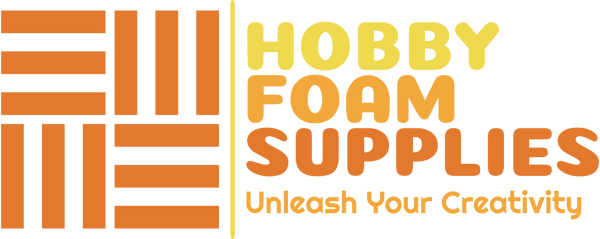XPS foam is an amazing material for crafting, prototyping, and building, but some common mistakes can spoil the results. Here’s a list of pitfalls, real-life examples, and troubleshooting tips to help you work smarter with XPS foam.
1. Using the Wrong Tools for Cutting
- Mistake: Using a basic kitchen knife or dull blade can lead to jagged edges, uneven cuts, and damage to the foam.
- Example: Imagine trying to cut out precise letters for a signage project but ending up with rough, inconsistent shapes. This happens often with improper tools.
-
Solution & Tips:
- Recommended Tool: A sharp utility knife or a hot wire foam cutter. The latter gives clean lines without tearing.
- Troubleshooting: If you have jagged edges, try running a fresh blade lightly over the edge to smooth it out. Practice on scrap pieces to improve control.
2. Skipping the Sanding Process
- Mistake: Rough, unsanded edges can make projects look less polished.
- Example: You’ve cut out a set of foam bricks for a model building, but when assembled, the edges don’t sit flush, making it look unfinished.
-
Solution & Tips:
- Sanding Supplies: Use fine-grit sandpaper (180-240 grit) or foam sanding pads for gentle smoothing.
- Troubleshooting: If edges are too uneven, try lightly sanding all sides to blend them evenly. Use a dust mask, as sanding foam creates fine particles.
3. Applying Paint Directly to the Foam
- Mistake: Certain paints, especially spray paints with harsh solvents, can dissolve foam, leading to rough textures and warping.
- Example: You spray-paint a piece of foam only to watch it bubble and deform. The solvent in the paint ate into the foam!
-
Solution & Tips:
- Recommended Products: Acrylic paints are foam-friendly, or use spray paints labelled “foam-safe.”
- Troubleshooting: If damage occurs, sand the affected area and repaint with a foam-safe option. Testing on a scrap piece first can save time and materials.
4. Not Considering Weight and Structure
- Mistake: Adding heavy embellishments without proper support can cause the foam to bend, warp, or even break.
- Example: You create a large foam sign and add embellishments, but over time, it starts to sag under its own weight.
-
Solution & Tips:
- Support Ideas: Reinforce large projects with wooden dowels or thin strips of hard foam. Layering XPS foam sheets can also strengthen structures.
- Troubleshooting: For an already sagging piece, you might salvage it by adhering a thin wood or cardboard backing to provide extra support.
5. Improper Glue Selection
- Mistake: Using solvent-based adhesives can dissolve or warp the foam, causing it to deteriorate.
- Example: You try a strong, all-purpose adhesive, but it melts a portion of the foam, leaving a crater.
-
Solution & Tips:
- Recommended Adhesives: Use foam-safe glues like white glue (PVA) for lightweight applications or low-temp hot glue for quick bonding.
- Troubleshooting: If adhesive damage occurs, cut away the affected area and patch it with a new piece of foam. Always let glue set completely before painting or handling.
6. Ignoring Environmental Impact
- Mistake: Discarding foam scraps rather than finding ways to recycle or reuse them.
- Example: After completing a project, you throw away excess foam. However, these scraps could have been repurposed for small decorations or future projects.
-
Solution & Tips:
- Reuse Ideas: Use scraps for miniature projects, padding, or insulation. Larger pieces can be stored and used for future crafts.
- Troubleshooting: If storage space is tight, consider local recycling programs for XPS foam or find community art groups who might welcome donations of clean foam pieces.
Bonus Tip: Always keep a few scrap pieces on hand for testing. From trying out new paints to experimenting with glue types, scraps can help you avoid costly mistakes on your main projects.
This guide can make XPS foam crafting easier and more enjoyable for your readers while saving them time and frustration on future projects!

